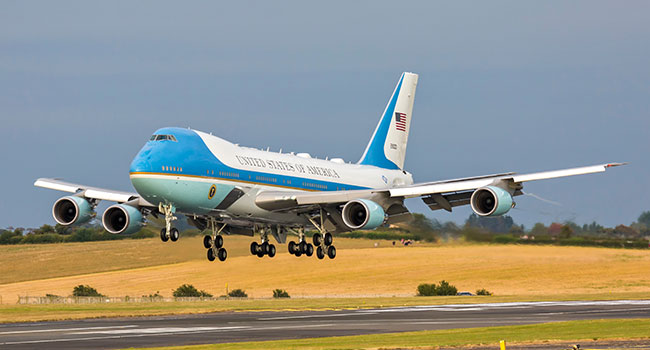
Air Force One Nearly Hit by Drone
As Air Force One was descending to an air base near Washington, D.C. recently, it nearly collided with a small drone, according to several people on board the aircraft. President Trump was aboard the modified Boeing Co. 757 aircraft.
The drone was described as yellow and black, and shaped like a cross. It was off to the right side of the aircraft shortly before touchdown at 5:54 p.m., at Joint Base Andrews in Maryland.
The matter is under review, and the White House Military Office and the Air Force’s 89th Airlift Wing is “aware of the report.”
While it has been notoriously difficult for aviation safety investigators to verify such fleeting events, it appears to be among the thousands of such safety incidents involving unmanned devices in the United States that have prompted calls by law enforcement and homeland security agencies for greater measures to rein in their use.
Most civilian drones weigh only a few pounds and probably couldn’t take down a jetliner. But government research suggests the damage could be greater than that from a similar-sized bird, which could shatter a cockpit windshield or damage an engine.
The Federal Aviation Administration receives thousands of reports per year in which drones fly too close to other aircraft or operate in restricted areas. Most of the reports come from pilots. The FAA referred questions on what happened near Andrews on Sunday to the Air Force.
Under current federal regulations, drones must be flown within sight of the operator and no higher than 400 feet (122 meters) above the ground without special waivers. While the most popular drone models are equipped with software designed to prevent longer range flights, incidents continue to pile up, according to government records.
There have been a handful of instances in which drones actually struck aircraft, but none have resulted in a serious crash or injuries, according to National Transportation Safety Board data.
The FAA hopes to unveil regulations requiring that civilian drones transmit their location and identity by the end of the year. The new requirement is designed to help prevent the devices from being used by terrorists and to reduce the risks they pose to traditional aircraft.